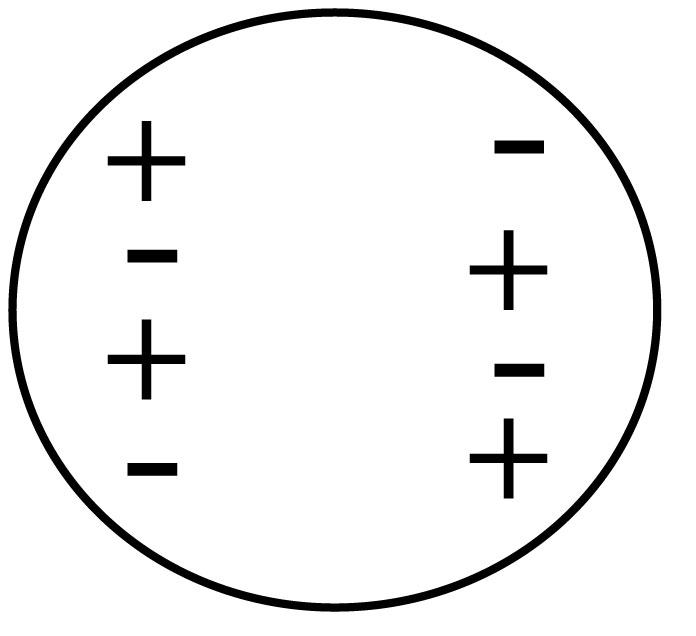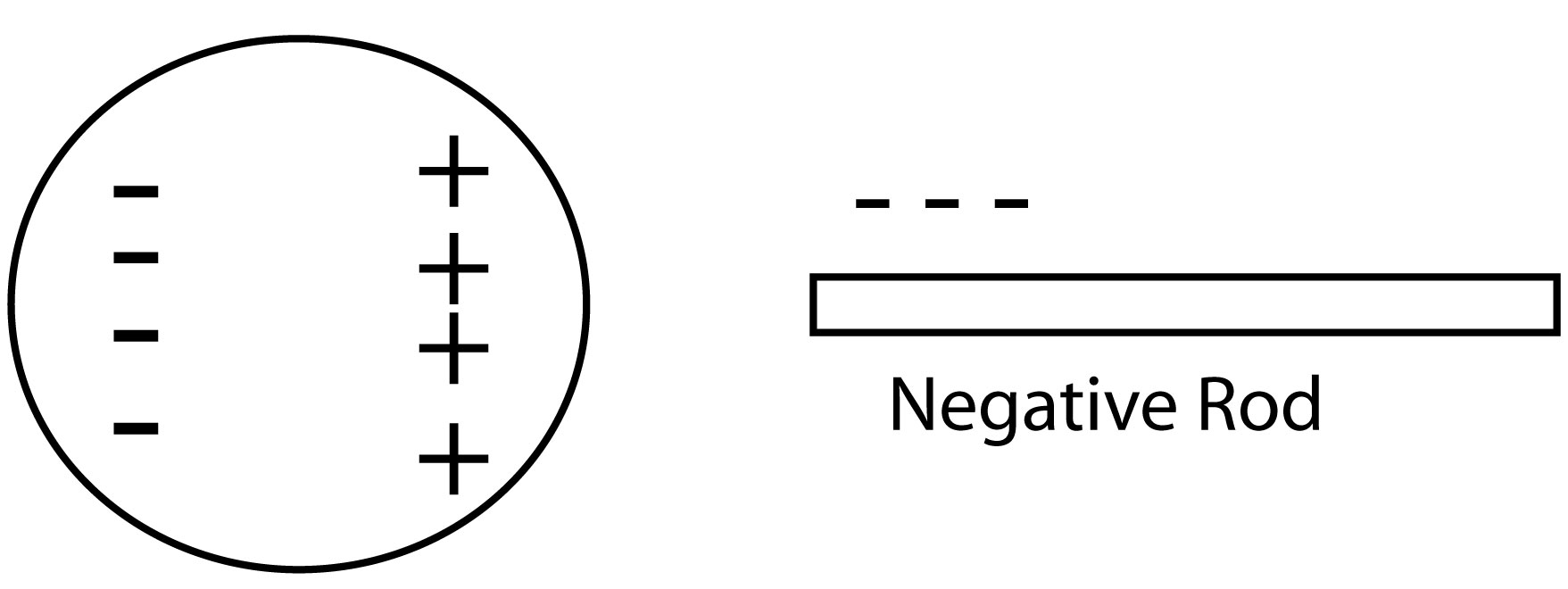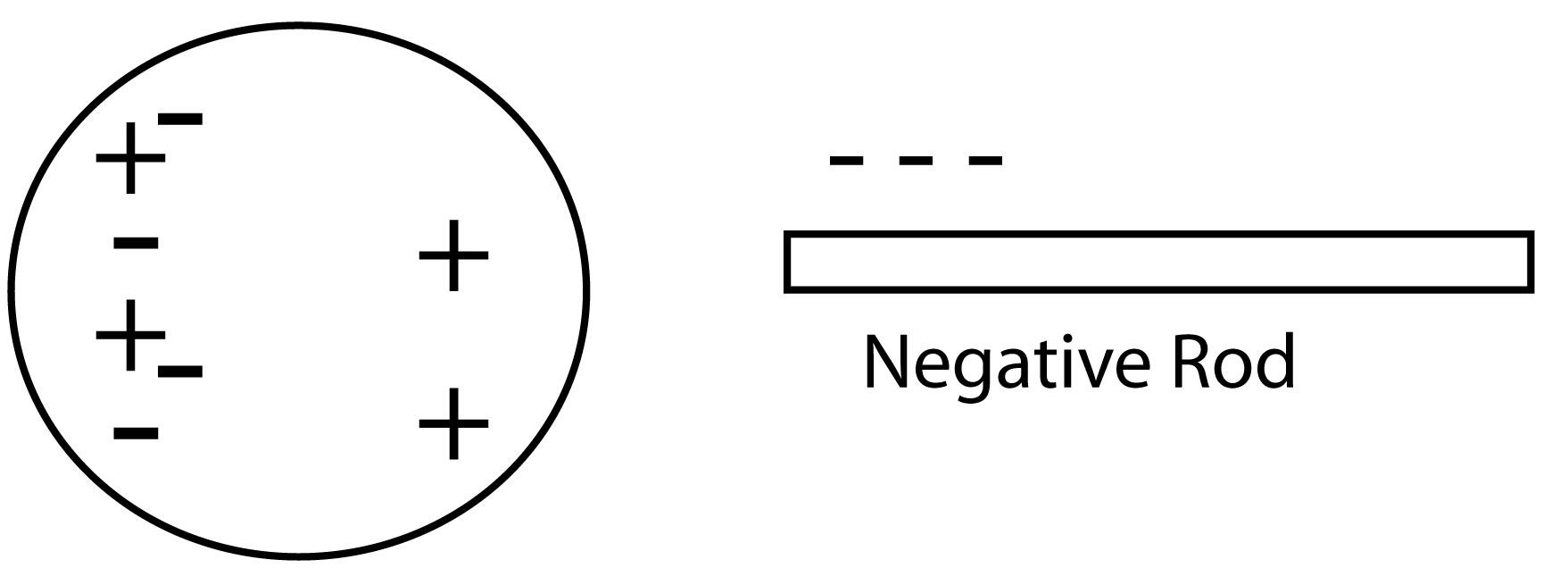Day 22 - More Information
There are only two charges, positive and negative. The particle that carries the positive charge is the proton. The electron carries the negative charge. For something to have a negative charge it must have more electrons than protons.
Neutral is not a charge. Something is neutral if it has the same number of protons as it does electrons.
The general statement of charge interactions is that like charges repel and unlike charges attract.
The three premises that we use to describe charge interactions are:
- If anything moves it will be the electrons.
- Like charges repel.
- Unlike charges attract.
| A "molecular level" model of how the pith ball will look like in terms of charges would have an equal number of positive and negative charges scattered randomly throughout the pith ball. Here is a simplified view. |
 |
| Many students draw a picture like the one on the right. Can you see that it is wrong? |  |
| It is wrong because the protons have moved and one of our premises is that only the electrons move! Here is a more accurate model. |  |
In this case we have used the premises that only electrons move and that like charges repel.
In the electroscope the positive rod attracts the electrons in the electroscope. It attacts them from both of the hanging gold foil leaves equally and so they both have the same charge and repel each other. We are assuming that the rod does not touch the metal plate. If it was a negative rod the rod would repel the electrons and force some extra electrons to go into each of the hanging foil pieces, giving them both a negative charge and causing them to repel again. Notice that the leaves would lose their charge and go back down when the rod is taken away. So, we are making temporary dipoles.
If the rod touches the top plate there will be a transfer of electrons from the electroscope to the positive rod. Once it touches, both the electroscope and the rod will have the same charge and the leaves will stay separated, even after taking the rod away.
If we charge up the electroscope so that it has a positive charge and the leaves stay separated when the rod is taken away, what will happen if you now put a negative rod nearby without touching?
When the negative rod got nearby it would repel the electrons in the electroscope and force some down into the leaves. That would neutralize some of the positive charge and the leaves would not separate as much.
What if you touch the negative rod to the positive electroscope? There are actually three possible outcomes in this case.
- If the negative rod has exactly the same amount of charge as the positive spectroscope, the leaves would become neutral and fall straight down.
- If the negative rod has a smaller negative charge than the spectroscope, the rod would neutralize some, but not all of the positive charge in the leaves and the leaves would not separate as far, but not go all the way down.
- If the negative charge was greater than the positive charge, the electroscope would accept enough to neutralize it and the leaves would go down, but since there are more electrons some of them would be transferred to the electroscope, giving the leaves a negative charge and they woul again separate. The leaves go down and then back out.